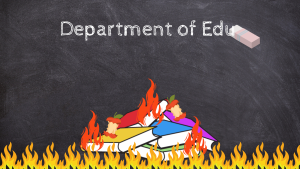Unbalanced hierarchies lead to uneven workload, plagiarism
Group projects are intended to teach students how to be great collaborators, but without guidance from professors, group projects can overburden students, violate the Rollins Academic Honor Code, and leave students feeling uncomfortable or disconnected. If professors plan to assign group projects, they must teach students how to collaborate.
Students are often assigned random groups for collaborative assignments. For example, I am in three groups this semester, and each was formed based on either how close I was sitting to my group mates, our names, or our shared interest in a particular research topic. Grouping us for these reasons created an imbalance in our willingness to complete work.
As a result of that imbalance, students who care about their grades are overburdened; they do the work themselves because they do not want to risk getting poor grades by waiting until the last minute or turning in work they are not proud of. High-achieving students end up doing the workload that is big enough for– and assigned to– three or four people.
When professors assign group projects, knowing that one or two members of the group will likely do most of the work, they are enabling some students to receive grades that were earned by others.
Rollins’ Academic Honor Code implies that a student has not lied, cheated, or plagiarized on any of their assignments. When a student receives a grade for an assignment they did not actually do, that is simply plagiarism. Are professors willing to excuse it because it happens within a group setting? Are they comfortable with the inevitable imbalance of work that leads students to break the honor code? If Rollins professors want their students to adhere to that code, they must give them the tools to effectively share the workload.
A study commissioned by the National Science Foundation (NSF) and published in the peer-reviewed journal Plos One found that, when students were asked to put themselves into groups, they joined peers who were most like them. This strategy left minority and female students feeling more uncomfortable than peers from majority demographics.
When students said that they felt comfortable in their group, their mastery of the material increased by 27.5 percent. The study also found that students in groups with a “dominator” did worse than students in groups without one. If left unchecked, group projects prevent students from learning.
Some would argue that group projects prepare students for the collaboration they will do as professionals after graduation. However, the settings in which students work are different from the professional world. Most of the time, coworkers will have been hired based on their skills and qualifications. Groups in college, on the other hand, are often randomly assigned.
In addition, in work environments, there is often a hierarchy of leadership that makes it clear who will take the lead on what part of a project. Job titles often reflect differing levels of responsibility: For example, “head writer” versus “writer” or “copy editor.”
The goal of group projects is to give students real-world experience and teach them how to collaborate. If professors do that effectively, their students can graduate as exceptional team members and contributors to projects larger than themselves. Working together is far more powerful than working alone, but professors must teach their students how to collaborate, not just ask them to.
Before assigning group assignments, professors can teach good practices, assign specific tasks with clear timelines, and have students assess their own skills and create groups based on complementary skill sets. Such measures can make for better group dynamics.
The NSF study found that identifying the structure within a group can help each member feel comfortable and reduce the likelihood of dominance by one member. Structure can be determined by assigning specific tasks to specific members or helping the group decide how they will communicate.
Additionally, professors can use a “complete/incomplete” project grading system to remove the pressure felt by high-achieving students that leads them to complete most of the work solo.
If Rollins professors teach their students how to work in tandem, blend their strengths, showcase one another’s talents, and create work larger than themselves, there is more hope for a powerful future with Rollins graduates leading the way. Today, it starts in the classroom, with professors committed to supporting the best collaborators of tomorrow.
The opinions on this page do not necessarily reflect those of The Sandspur or Rollins College.







Comments are closed.